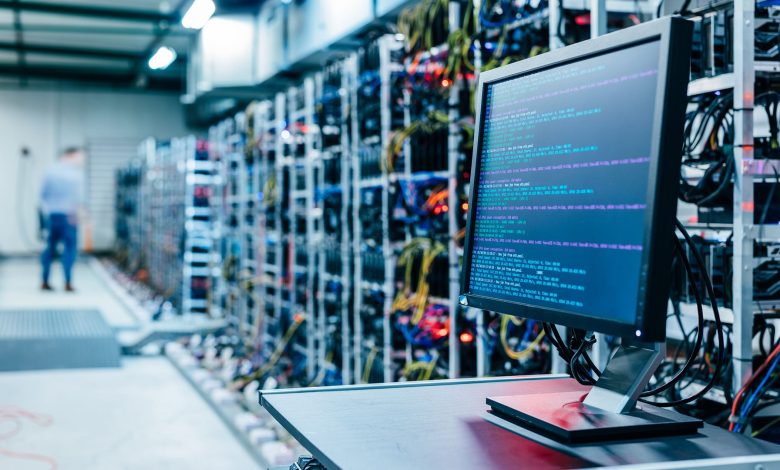What is Cryptocurrency Mining

- Understanding the Basics of Cryptocurrency Mining
- The Process of Generating New Cryptocurrencies
- How Cryptocurrency Mining Secures the Blockchain
- Types of Cryptocurrency Mining Algorithms
- The Role of Miners in the Cryptocurrency Ecosystem
- Challenges and Rewards of Cryptocurrency Mining
Understanding the Basics of Cryptocurrency Mining
Cryptocurrency mining is the process of validating transactions on a blockchain network by solving complex mathematical problems. Miners use powerful computers to compete against each other in solving these puzzles, with the first one to find the correct solution being rewarded with newly minted coins. This process is essential for maintaining the integrity and security of the cryptocurrency network.
One of the key concepts in cryptocurrency mining is the proof-of-work (PoW) consensus algorithm, which requires miners to show proof that they have performed a certain amount of computational work in order to validate transactions. This ensures that no single entity can control the network and prevents double-spending.
Miners are incentivized to participate in the mining process through block rewards, which are given to them for successfully adding a new block of transactions to the blockchain. In addition to block rewards, miners also receive transaction fees for processing transactions on the network. The combination of block rewards and transaction fees serves as the primary source of income for miners.
It’s important to note that cryptocurrency mining requires a significant amount of computational power and energy consumption. As a result, mining operations are often concentrated in regions with cheap electricity to maximize profits. Additionally, the mining difficulty level adjusts regularly to ensure that new blocks are added to the blockchain at a consistent rate, regardless of the total computational power of the network.
The Process of Generating New Cryptocurrencies
The process of generating new cryptocurrencies, also known as cryptocurrency mining, is a crucial aspect of the digital currency ecosystem. This process involves using powerful computers to solve complex mathematical problems that validate and secure transactions on the blockchain network. Miners compete to be the first to solve these problems, with the successful miner being rewarded with newly minted coins as well as transaction fees.
Cryptocurrency mining requires a significant amount of computational power and energy consumption. Miners often form mining pools to combine their resources and increase their chances of successfully mining a new block. As more miners join the network, the difficulty of mining increases, requiring even more computational power to compete.
One of the key components of cryptocurrency mining is the use of specialized hardware, such as ASICs (Application-Specific Integrated Circuits), which are designed specifically for mining cryptocurrencies. These devices are much more efficient at solving the complex mathematical problems required for mining than traditional CPUs or GPUs.
In addition to hardware, miners also need to consider the cost of electricity, as mining can be energy-intensive. Some miners choose to set up their operations in locations with cheap electricity to maximize their profits. However, the environmental impact of cryptocurrency mining has raised concerns, as it can contribute to increased energy consumption and carbon emissions.
Overall, the process of generating new cryptocurrencies through mining plays a vital role in the security and decentralization of blockchain networks. It incentivizes miners to participate in validating transactions and maintaining the integrity of the network, ensuring the smooth operation of the cryptocurrency ecosystem.
How Cryptocurrency Mining Secures the Blockchain
Cryptocurrency mining plays a crucial role in securing the blockchain network. Miners are responsible for validating transactions and adding them to the blockchain ledger. This process involves solving complex mathematical puzzles using computational power. The first miner to solve the puzzle gets the opportunity to add a new block to the blockchain and is rewarded with newly minted coins.
By participating in mining, individuals or groups contribute their computing power to the network, making it more secure and decentralized. The distributed nature of mining helps prevent fraud and ensures the integrity of the blockchain. Additionally, the consensus mechanism used in mining (such as Proof of Work or Proof of Stake) helps maintain the trustworthiness of the network.
Overall, cryptocurrency mining acts as a safeguard against malicious activities like double-spending and ensures the immutability of the blockchain. It incentivizes miners to follow the rules and maintain the integrity of the network. Without mining, the blockchain would be vulnerable to attacks and manipulation, compromising the trust and reliability of cryptocurrencies.
Types of Cryptocurrency Mining Algorithms
Cryptocurrency mining algorithms are the backbone of the blockchain network, ensuring transactions are verified and added to the public ledger. There are several types of algorithms used in cryptocurrency mining, each with its unique characteristics and requirements.
- SHA-256: This algorithm is used by Bitcoin and many other cryptocurrencies. It is known for its high level of security and computational complexity, making it difficult for hackers to manipulate the blockchain.
- Scrypt: Scrypt is used by Litecoin and Dogecoin, among others. It is designed to be more memory-intensive than SHA-256, making it less susceptible to ASIC mining.
- X11: X11 is a chained hashing algorithm that uses a sequence of 11 different hashing functions. It is used by Dash and provides a higher level of energy efficiency compared to other algorithms.
- CryptoNight: This algorithm is used by Monero and is designed to be ASIC-resistant, allowing for more decentralized mining. It focuses on the privacy and anonymity of transactions.
- Equihash: Equihash is used by Zcash and is known for its memory-hardness, requiring a significant amount of memory to solve the algorithm. This makes it more resistant to ASIC mining.
Each cryptocurrency mining algorithm has its strengths and weaknesses, influencing factors such as security, energy efficiency, and decentralization. Miners choose the algorithm that best aligns with their goals and resources to participate in the network and earn rewards.
The Role of Miners in the Cryptocurrency Ecosystem
Cryptocurrency miners play a crucial role in the ecosystem by validating transactions and securing the network. Miners use powerful computers to solve complex mathematical puzzles that confirm transactions on the blockchain. This process, known as proof of work, requires significant computational power and energy consumption.
Miners are incentivized to participate in this process by receiving rewards in the form of newly minted coins. This reward system not only motivates miners to continue validating transactions but also helps to distribute new coins into circulation. Additionally, miners also earn transaction fees for including transactions in the blocks they mine.
Without miners, the cryptocurrency network would be vulnerable to attacks and fraudulent activities. Miners help to maintain the integrity and security of the blockchain by ensuring that transactions are legitimate and cannot be altered once they are confirmed. Their work is essential for the functioning of the entire cryptocurrency ecosystem.
Challenges and Rewards of Cryptocurrency Mining
Cryptocurrency mining can be a lucrative endeavor, but it also comes with its fair share of challenges and rewards. One of the main challenges of cryptocurrency mining is the high level of competition in the market. With more and more miners joining the network, it can be difficult to mine new coins and generate profits. Additionally, the cost of mining equipment and electricity can be significant, cutting into potential earnings.
On the other hand, the rewards of cryptocurrency mining can be substantial. Miners have the opportunity to earn new coins as a reward for verifying transactions and securing the network. These coins can then be held as an investment or sold for a profit. Additionally, mining can provide a sense of satisfaction and accomplishment as miners contribute to the decentralized nature of cryptocurrencies.
Overall, cryptocurrency mining presents both challenges and rewards for those willing to put in the time and effort. By staying informed about market trends and developments, miners can navigate the challenges and reap the rewards of this exciting industry.



